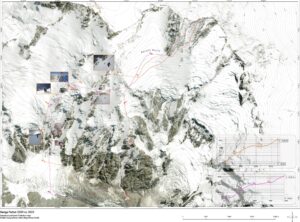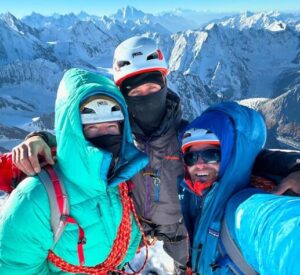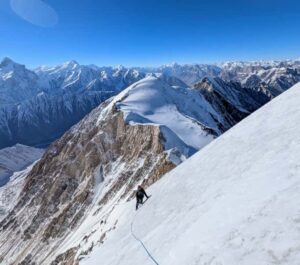As we reported earlier this fall, a three-man Polish-Slovak team has done the first ascent of 6,754m Chumik Kangri in Pakistan’s heavily militarized Saltoro region. The zone has been off-limits to climbers for years due to border tensions between India and Pakistan.
Climbers Michal Czech and Wadim Jablonski from Poland, and Adam Kaniak from Slovakia, reached the summit via the unclimbed south face. They accessed the peak by the Gyong Glacier, an area so rarely visited that even basic maps were unreliable. It was a true exploratory expedition.
The team named their 1,100m line The Great Gig in the Sky, according to PlanetMountain. The climbers graded it M6 for mixed climbing and A1 for aid sections. Challenges included a prominent pillar, exposed traverses, fragile rocks, and steep snow and ice fields.
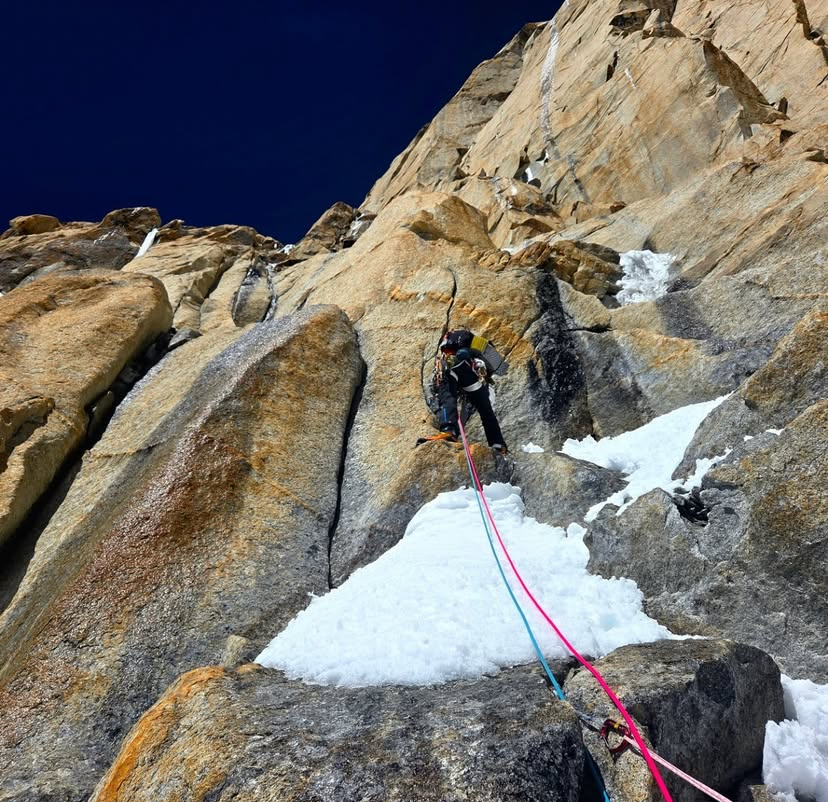
On the south face of Chumik Kangri. Photo: Wadim Jablonski
A dark start
The trio began the climb during the night of September 14 to avoid rockfall and unstable snow. According to Jablonski, they were happy to find that the approach in the dark was quite safe and obvious. The first day, they focused on reaching the edge of the Chumik pillar over steep ice and granite. They established their first bivouac at 6,250m on a sharp snow ridge.
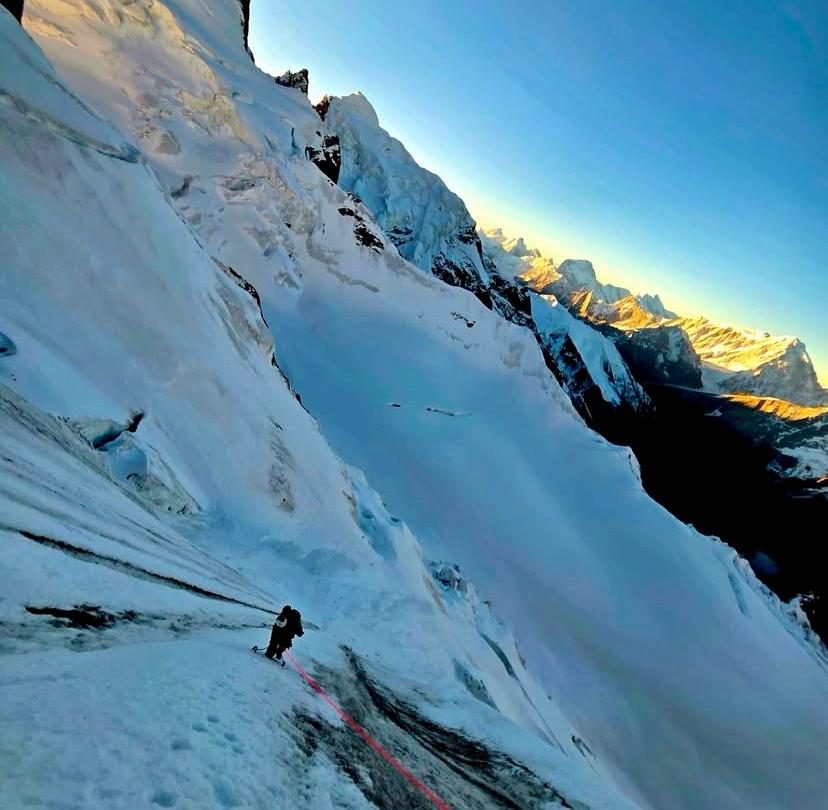
Photo: Wadim Jablonski
The second day brought them the greatest uncertainty. Jablonski recalls that they didn’t know if it was possible to find a way through the huge, steep upper part of the pillar.
“But thanks to nature’s plan, there are faint rock features and thin ice smears that let us climb to the plateau at 6,600m, just below the summit,” wrote Jablonski on social media. There, they made their second bivouac.
After three days on the wall, Czech, Jablonski, and Kaniak topped out on September 16.
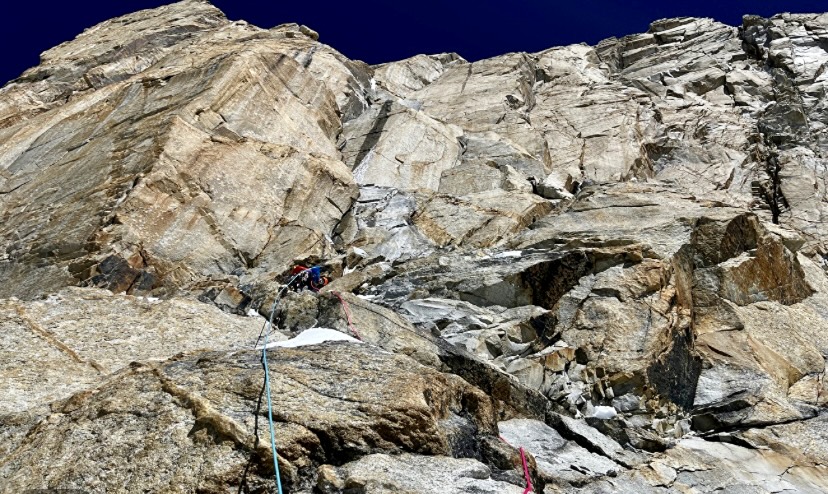
Chumik Kangri’s south face. Photo: Polish-Slovak expedition/PlanetMountain
Descent: A fight in the dark
The descent proved more harrowing than the ascent. The climbers followed a rough ridge characterized by seracs, poor ice, and loose rock. They did several rappels and completed much of the descent in darkness to minimize the risk of ice and rockfall.
“This was one of our most serious undertakings,” they later reflected, citing the combination of high altitude, technical difficulty, and general uncertainty.
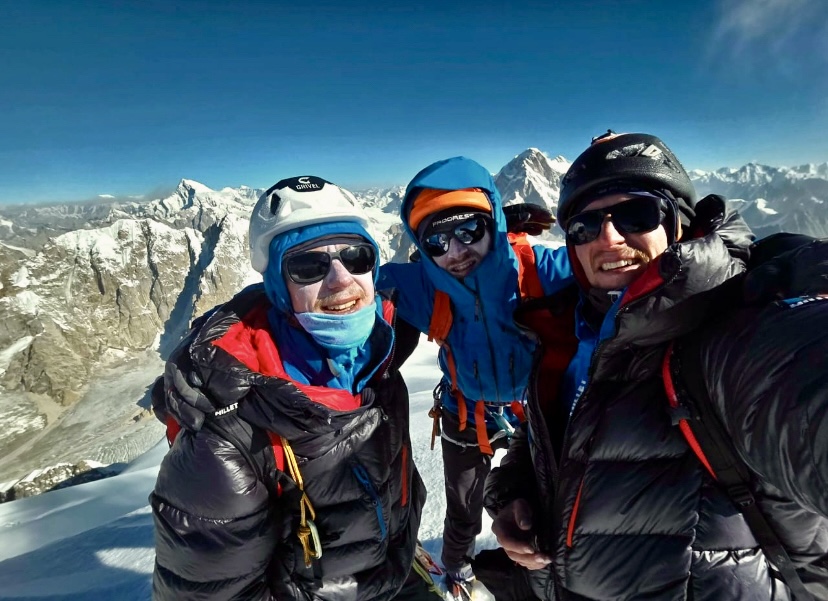
Czech, Jablonski, and Kaniak on the top. Photo: Ali Saltoro
Permits and checkpoints
The team had to navigate complex logistics. They had an official permit for unclimbed 6,600m Gharkun Tower, another peak in the area, but switched to Chumik Kangri after reconnaissance showed it offered a better balance of risk, technical interest, and summit probability.
Traveling with a mandatory liaison officer, they passed through army checkpoints and were among the first foreign visitors to enter the valley in 45 years.
Locals and security forces offered unexpected hospitality in a region defined by military presence. With no reliable maps, the climbers relied on satellite imagery, self-made sketches and on-the-ground observation to plan their route and bivy sites.

An impressive place for climbing. Photo: Ali Saltoro
Supported by the Polish Mountaineering Association, the Polish Ministry of Sport & Tourism, and sponsors, their effort was part of a broader mission to climb unexplored 6,000m peaks in the Karakoram.
Gharkun Tower and Gharkun Main — not the same
Although the party didn’t climb Gharkun Tower, it wasn’t clear to most of us until recently if Gharkun Tower and Gharkun were the same peak. Gharkun (6,620m) lies just south of K12 and was first ascended in 1976. According to the Alpine Journal, a five-man Japanese expedition led by Haruki Sugiyama climbed it in July, with all five reaching the summit.
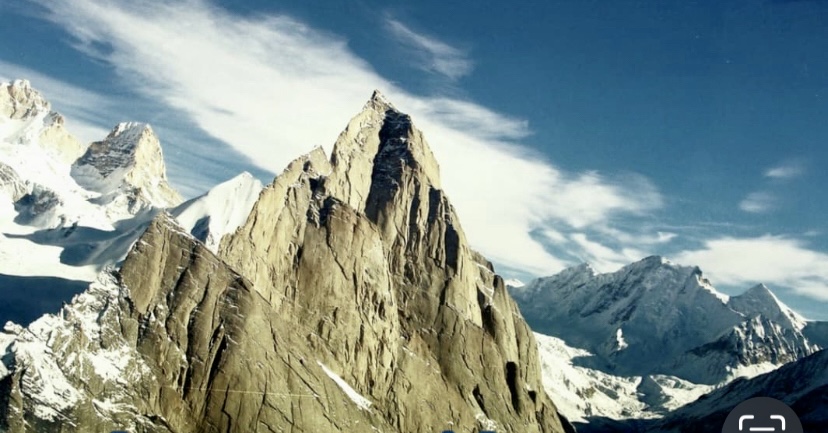
Gharkun Tower, foreground. Photo: Ali Saltoro
ExplorersWeb asked Ali Saltoro, director of Alpine Adventure Guides and the expedition’s outfitter, about Gharkun Tower. According to him, the 6,600m Gharkun Tower is next to Gharkun (main) and remains unclimbed.
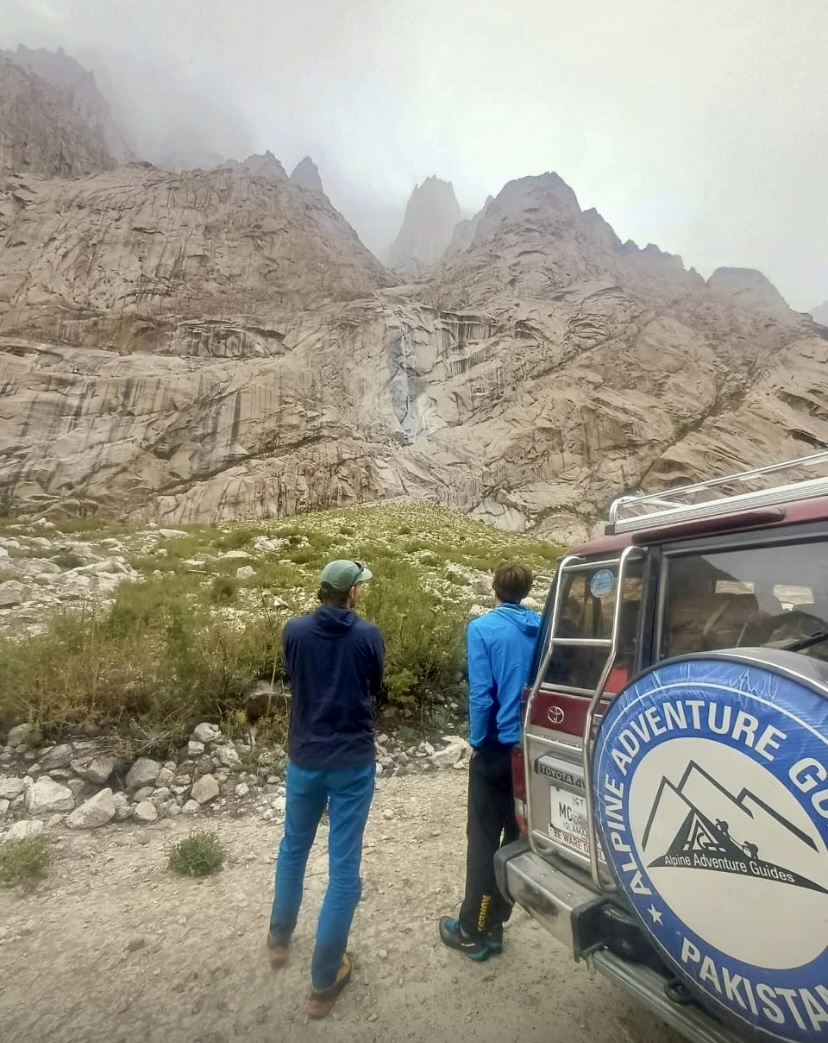
One of the climbers, right, studies the terrain with Ali Saltoro. Photo: Ali Saltoro
These valleys have many unclimbed peaks below 7,000m that offer a mix of ice and rock, according to Ali Saltoro.
”The Saltoro Valley is a piece of heaven on earth and a second Patagonia for mountaineers looking for a first ascent,” he added.

Pakistan’s Saltoro Valley. Photo: Ali Saltoro

